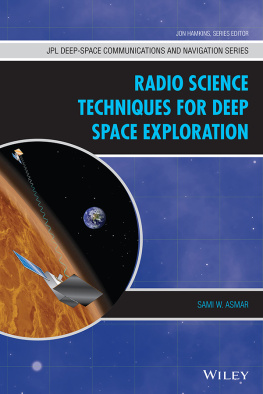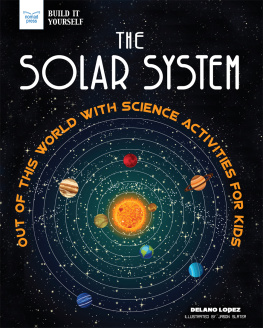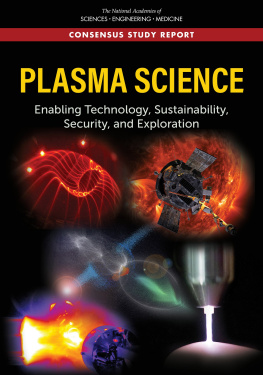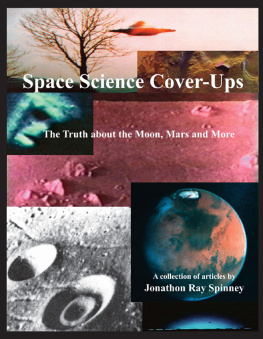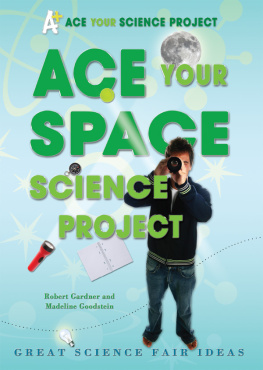
DEEP SPACE COMMUNICATIONS AND NAVIGATION SERIES
Issued by the Deep Space Communications and Navigation Systems
Center of Excellence, Jet Propulsion Laboratory
California Institute of Technology
Jon Hamkins, Editor-in-Chief
Published Titles in this Series
Radiometric Tracking Techniques for Deep-Space Navigation
Catherine L. Thornton and James S. Border
Formulation for Observed and Computed Values of Deep Space Network Data Types for Navigation
Theodore D. Moyer
Bandwidth-Efficient Digital Modulation with Application to Deep-Space Communications
Marvin K. Simon
Large Antennas of the Deep Space Network
William A. Imbriale
Antenna Arraying Techniques in the Deep Space Network
David H. Rogstad, Alexander Mileant, and Timothy T. Pham
Radio Occultations Using Earth Satellites: A Wave Theory Treatment
William G. Melbourne
Deep Space Optical Communications
Hamid Hemmati, Editor
Spaceborne Antennas for Planetary Exploration
William A. Imbriale, Editor
Autonomous Software-Defined Radio Receivers for Deep Space Applications
Jon Hamkins and Marvin K. Simon, Editors
Low-Noise Systems in the Deep Space Network
Macgregor S. Reid, Editor
Coupled-Oscillator Based Active-Array Antennas
Ronald J. Pogorzelski and Apostolos Georgiadis
Low-Energy Lunar Trajectory Design
Jeffrey S. Parker and Rodney L. Anderson
Deep Space Communications
Jim Taylor, Editor
Radio Science Techniques for Deep Space Exploration
Sami W. Asmar
Radio Science Techniques for Deep Space Exploration
Sami W. Asmar
Jet Propulsion Laboratory
California Institute of Technology
Pasadena, California
This edition first published 2022
2022 John Wiley & Sons, Inc.
All rights reserved. No part of this publication may be reproduced, stored in a retrieval system, or transmitted, in any form or by any means, electronic, mechanical, photocopying, recording or otherwise, except as permitted by law. Advice on how to obtain permission to reuse material from this title is available at http://www.wiley.com/go/permissions.
The right of Sami W. Asmar to be identified as the author of this work has been asserted in accordance with law.
Registered Office
John Wiley & Sons, Inc., 111 River Street, Hoboken, NJ 07030, USA
Editorial Office
111 River Street, Hoboken, NJ 07030, USA
For details of our global editorial offices, customer services, and more information about Wiley products visit us at www.wiley.com.
Wiley also publishes its books in a variety of electronic formats and by print-on-demand. Some content that appears in standard print versions of this book may not be available in other formats.
Limit of Liability/Disclaimer of Warranty
The contents of this work are intended to further general scientific research, understanding, and discussion only and are not intended and should not be relied upon as recommending or promoting scientific method, diagnosis, or treatment by physicians for any particular patient. In view of ongoing research, equipment modifications, changes in governmental regulations, and the constant flow of information relating to the use of medicines, equipment, and devices, the reader is urged to review and evaluate the information provided in the package insert or instructions for each medicine, equipment, or device for, among other things, any changes in the instructions or indication of usage and for added warnings and precautions. While the publisher and authors have used their best efforts in preparing this work, they make no representations or warranties with respect to the accuracy or completeness of the contents of this work and specifically disclaim all warranties, including without limitation any implied warranties of merchantability or fitness for a particular purpose. No warranty may be created or extended by sales representatives, written sales materials or promotional statements for this work. The fact that an organization, website, or product is referred to in this work as a citation and/or potential source of further information does not mean that the publisher and authors endorse the information or services the organization, website, or product may provide or recommendations it may make. This work is sold with the understanding that the publisher is not engaged in rendering professional services. The advice and strategies contained herein may not be suitable for your situation. You should consult with a specialist where appropriate. Further, readers should be aware that websites listed in this work may have changed or disappeared between when this work was written and when it is read. Neither the publisher nor authors shall be liable for any loss of profit or any other commercial damages, including but not limited to special, incidental, consequential, or other damages.
Library of Congress Cataloging-in-Publication Data
Names: Asmar, Sami W., author.
Title: Radio science techniques for deep space exploration / Sami W. Asmar, Jet Propulsion Laboratory, California Institute of Technology, Pasadena, California.
Description: Hoboken, NJ, USA : John Wiley & Sons, 2022. | Series: JPL deep-space communications and navigation series | Includes bibliographical references and index.
Identifiers: LCCN 2021053318 (print) | LCCN 2021053319 (ebook) | ISBN 9781119734147 (hardback) | ISBN 9781119734154 (pdf) | ISBN 9781119734161 (epub) | ISBN 9781119734178 (ebook)
Subjects: LCSH: Space vehicles--Tracking. | Space vehicles--Radio equipment. | Radio astronomy. | Solar system.
Classification: LCC TL4030 .A86 2022 (print) | LCC TL4030 (ebook) | DDC 621.3848--dc23/eng/20211103
LC record available at https://lccn.loc.gov/2021053318
LC ebook record available at https://lccn.loc.gov/2021053319
Cover image: Courtesy of Sami Asmar
Cover design by Wiley
Set in 9.5/12.5pt STIXTwoText by Integra Software Services, Pondicherry, India
Contents
List of Illustrations
- Chapter 1
- Chapter 2
- Chapter 3
- Chapter 4
- Chapter 5
- Chapter 6
List of Tables
- Chapter 1
- Chapter 2
- Chapter 3
- Chapter 4
- Chapter 5
- Chapter 6
Guide
Pages
Foreword
This book is the latest contribution to the Deep SpaceCommunications and Navigation Systems (DESCANSO) series. DESCANSO is a Center of Excellence formed in 1998 by the National Aeronautics and SpaceAdministration (NASA) at the Jet Propulsion Laboratory (JPL), which is managed under contract by the California Institute of Technology. DESCANSO is unrelated to the nearby botanical landscape, Descanso Gardens, but shares its wonderful values of growing and cultivating understanding through inspiration and example. DESCANSOs vision is to help NASA and JPL achieve continuous communications and precise navigation, anytime and anywhere. To do this, DESCANSO supports the development of new technologies, concepts, and systems; sponsors seminars and facilitates interaction and idea exchange; and shares knowledge by publishing books and articles. The DESCANSO book series, authored by scientists and engineers with many years of experience in their fields, lays a foundation for innovation by sharing state-of-the-art knowledge, fundamental principles and practices, and lessons learned in key technologies. A companion article series, the Design and Performance Summary series, captures the design and performance of specific communications and navigation systems used on JPL missions. For science and technology topics more general than communications and navigation, DESCANSO also publishes the JPL Space Science and Technology Book Series.
Next page
